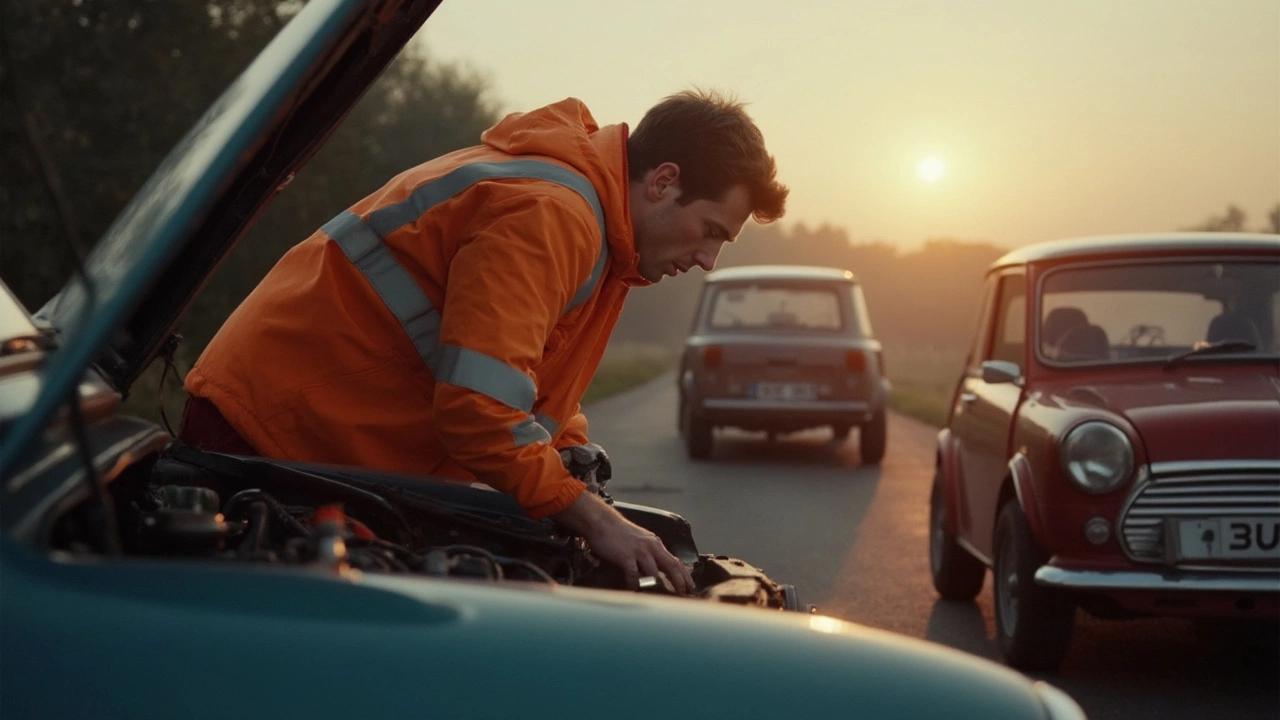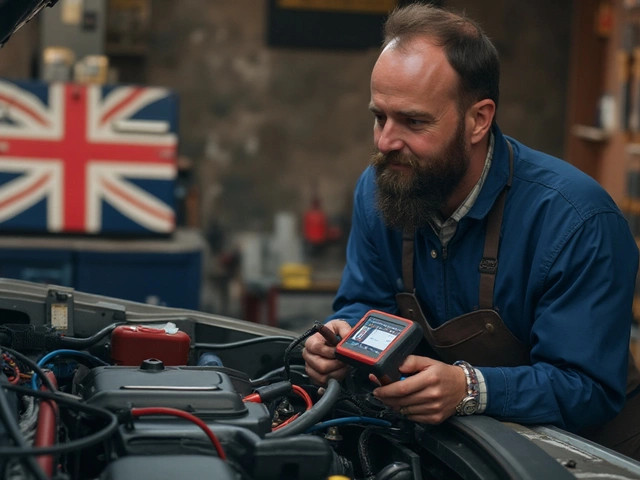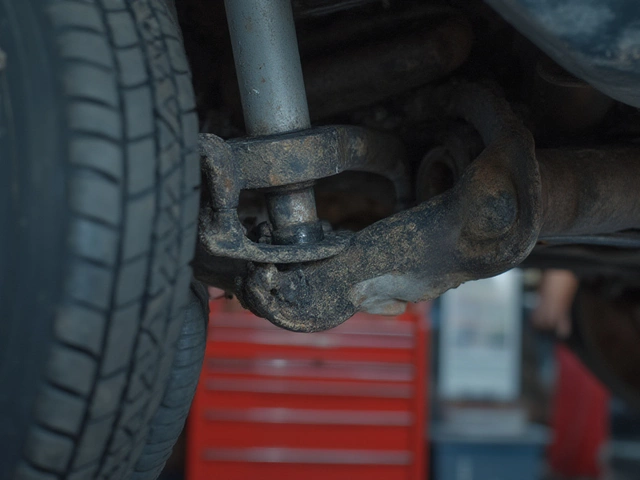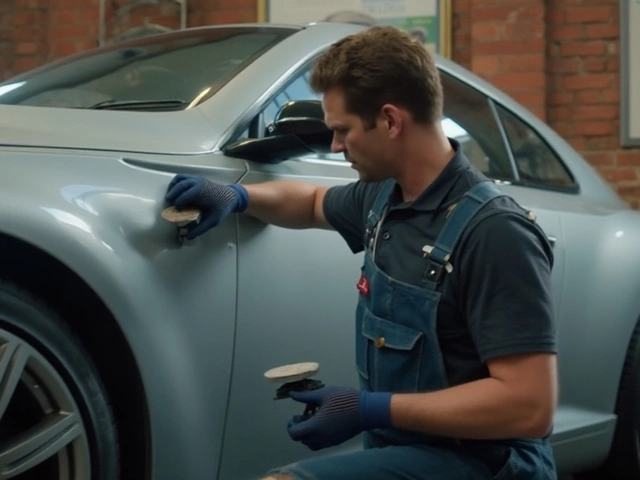Ever tried to start your car and it just won’t turn over? Chances are, your fuel pump might be to blame. This part is basically the lifeline between your gas tank and your engine. Without it, your car isn’t getting the fuel it needs to fire up and keep running. The pump draws gasoline out of the tank and pushes it along the fuel line, making sure plenty reaches your engine for that next trip—whether it’s across town or a cross-country road trip.
If you’ve ever wondered why cars don’t just run on gravity, here’s the deal: most fuel tanks sit way lower than the engine, especially in modern cars. Gravity isn’t enough. So, the pump does the heavy lifting, working even when you’re idling in traffic or tearing up the highway.
It’s actually under more pressure than you’d think—most modern systems operate at around 30 to 60 psi (pounds per square inch). That’s way more than a bike tire and just enough to keep things flowing smoothly and efficiently. Skip the humble fuel pump, and your car’s nothing more than a pricey lawn ornament.
- What a Fuel Pump Actually Does
- Types of Fuel Pumps and Why They Matter
- How to Spot a Failing Fuel Pump
- Keeping Your Fuel Pump Running Strong
What a Fuel Pump Actually Does
Picture the fuel pump as the engine’s personal delivery guy. Its job is to grab fuel from the gas tank and send it straight to the engine, under just the right amount of pressure. Without it, the engine gets nothing and doesn’t run. Pretty simple: no fuel, no go.
Here’s how it works: when you turn the key or push the start button, the fuel pump powers on and draws fuel up from the tank through a filter. It then sends that fuel down the line to the injectors or carburetor. These days, most cars use direct injection, so the fuel has to get blasted into the engine under high pressure.
It’s not just about moving gas—pressure is everything here. Too little pressure, and your engine sputters or just doesn’t start. Too much? You could flood the engine or even damage parts. The pump usually keeps things steady, controlled by sensors and a fuel pressure regulator.
- Your car’s fuel pump might run at around 40 psi (pounds per square inch), but some modern direct injection engines can reach over 2,000 psi—that’s insanely high, and necessary for today’s powerful, efficient motors.
- Most pumps sit inside the gas tank because fuel cools and lubricates the pump, making it last longer.
- If you run low on gas often, the pump can overheat or wear out early, since it relies on fuel for cooling.
You might not see the fuel pump, but it’s working hard every second the engine is on. Here’s a quick comparison of pressure levels to put things in perspective:
| Item | Pressure (psi) |
|---|---|
| Car Fuel Pump (Regular) | 30-60 |
| Bike Tire | 60-110 |
| Modern Direct Injection Pump | 500-2,000 |
| Basketball | 8-12 |
Without the pump, all that technology in your car means nothing. It’s doing something simple but crucial—delivering fuel where it needs to go, at the right time, and with the perfect pressure.
Types of Fuel Pumps and Why They Matter
When people mention a fuel pump, they’re usually talking about one of two types: mechanical or electric. The one your vehicle uses depends on age and design. Here’s how they break down.
- Mechanical fuel pumps: Early cars and some classic rides use these. They run off the engine itself, usually with a lever that moves as the engine turns. You’ll spot these on older cars running carburetors. Pretty simple, mostly reliable, but can’t handle the higher fuel pressures that newer engines need.
- Electric fuel pumps: These are what you’ll find in pretty much every modern car built since the late ‘80s. They’re powered by your car’s electrical system and usually sit inside the gas tank. Why inside? Being in the gas keeps them cool and cuts down on noise. They can deliver steady, higher pressure for fuel injection systems.
Want the quick-and-dirty differences? Check this out:
| Feature | Mechanical Pump | Electric Pump |
|---|---|---|
| Main Use | Carbureted engines (older cars) | Fuel-injected engines (modern cars) |
| Location | Mounted on engine | Inside or near fuel tank |
| Fuel Pressure | 3-10 psi | 30-60 psi |
| Common Failures | Worn diaphragm | Burned out motor or clogged filters |
This stuff matters because using the wrong type can blow your engine or leave you stranded. If you swap an old carburetor for fuel injection, you’ll need to upgrade to an electric pump. Muscle car fans run into this a lot with engine swaps.
One more tip: Always match your replacement pump to your engine’s demands and your car’s wiring. Cutting corners here sets you up for major headaches. Don’t guess—check your owner's manual or ask a pro if you’re unsure what you’ve got.

How to Spot a Failing Fuel Pump
So, how do you know your fuel pump is kicking the bucket? The signs can sneak up, but a few red flags usually pop up before you’re left stranded. Don’t ignore them.
- Hard Starts or No Start: If your car takes a bunch of cranks before firing up, or sometimes won’t start at all, your fuel pump might be letting you down. Especially if your battery is fine and everything else seems normal.
- Sputtering at High Speeds: You’re cruising along, maybe above 55 mph, and suddenly the car jerks or sputters. That’s often a telltale sign your fuel pump isn’t keeping the flow steady enough for the engine.
- Engine Stalling: Random stalling—especially when it feels like you’re running out of gas—points to low fuel pressure, a classic symptom of a tired pump.
- Loss of Power Under Strain: Cars should handle hills, hauling, and highway passes with ease. If your ride is gasping for power in these situations, suspect the pump.
- Whining Noise From the Tank: Quiet garage, ignition on, and you hear a constant whine from the area under your rear seat? Bad sign. Pumps typically hum softly, but loud whining often means they’re on their last legs.
Here’s a quick snapshot of common symptoms and how often they typically lead to actual pump failure, according to repair shops:
| Symptom | Linked to Pump Outages (%) |
|---|---|
| Hard Starting / No Start | 72% |
| Sputtering at Speed | 51% |
| Engine Stalling | 66% |
| Loss of Power | 58% |
| Whining Noise | 44% |
Think you’re having some of these problems? Don’t just throw in a new part. Check your fuel filter, lines, and even your car’s electrical stuff. But if you’re getting multiple symptoms—especially together—it’s time to look at the fuel pump seriously. You really don’t want this part to give up in the middle of nowhere.
Keeping Your Fuel Pump Running Strong
If you want your fuel pump to last, there are a few habits and tips that go a long way. First up: don’t make a habit of driving with your tank nearly empty. When you run low on gas all the time, the pump can overheat, since most pumps rely on gasoline for cooling and lubrication. The lower you let your tank get, the harder your pump has to work—not great for its long-term health.
Another common killer? Dirty fuel. If you’re filling up at questionable stations or ignoring your fuel filter, gunk can clog things up and make life tough for your pump. Think of the fuel filter as the bodyguard, and your pump as the VIP—they work best as a team. Replacing your fuel filter at regular intervals (most automakers recommend somewhere between 30,000 and 50,000 miles) is cheap insurance.
Watch for signs your pump’s in trouble. Listen for a whining noise from the tank, stumbling starts, or sudden loss of power at high speeds. Catching these early can spare you from being stranded on the side of the road. Modern pumps are built to go the distance—often past 100,000 miles—but they’re not invincible.
- Keep at least a quarter tank of fuel at all times
- Change the fuel filter as recommended
- Avoid dirty or off-brand gas stations
- Listen for weird sounds or hesitations when you drive
Here’s a quick look at common fuel pump lifespans versus their risk factors:
| Condition | Average Fuel Pump Lifespan (Miles) |
|---|---|
| Regular Filter Changes, Good Fuel | 120,000+ |
| Neglected Filter, Dirty Fuel | 60,000–80,000 |
| Always Running Low on Gas | 70,000–90,000 |
One last tip: if you’re replacing your pump, swap out that filter at the same time. It just makes sense—you wouldn’t put dirty oil into a new engine, right? Treat your fuel pump the same way if you want reliable starts and smooth drives in the long run.






